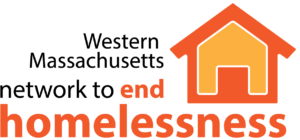The second part of a three part post from the Zero 2016 campaign:
A Housing System Built for Zero Part Two: Assessment and the Role of By-Name Lists
Last month, many of the 71 communities participating in Zero:2016 launched their local participation during the federal Point-in-Time (PIT) Count. This annual count of sheltered and unsheltered people experiencing homelessness gathers important data for tracking federal trends, setting policy and allocating national resources – but this anonymous count does have some drawbacks. It does not provide the necessary information that housing and service workers need in order to follow up with people experiencing homelessness in their communities and connect them to housing. That’s why 49 Zero: 2016 communities across the country went the extra mile this year, taking care to meet all federal count standards while also using the PIT count as an opportunity to implement the first of four components of a coordinated assessment and housing placement system: assessment.
Experience has shown us that a community cannot gather the necessary information to house its homeless neighbors solely by counting them anonymously once a year. As New Orleans’ successful drive to end veteran homelessness has shown, a local team must know the names and unique needs of every person on its streets and in its shelters. That’s where assessment comes in. By learning names, documenting stories and understanding the most urgent needs of each of their homeless neighbors, communities can take a critical step toward moving people off the streets and into housing.
In order to collect this by-name information, many communities across the country are selecting, or have already selected, a Common Assessment Tool (CAT).
A CAT is a standard set of questions used by all agencies and organizations in a community that allows the local team to quickly assess people based on their unique circumstances and needs. Additionally, it helps outreach workers and service providers find the best housing match to fit these needs. CAT data creates the foundation of an informed CAHP system, offering a birdseye view of everyone experiencing homelessness in a community and providing a way to connect each person to the most appropriate housing option, in line with research, chronic and veteran status and other local priorities.
If a connection to permanent housing and services is the output of a well functioning CAHP system, then by-name CAT data is the critical input. Without it, it’s hard to connect people to housing in a strategic or comprehensive way.
In order to maximize the impact of a CAT, communities should choose the best tool for their local circumstances and then integrate it into their PIT counts, day-to-day street outreach and service operations. This complete integration allows communities to create a comprehensive, continuously updated, by-name list of all those experiencing homelessness. This list should be stored in a central, HIPAA-compliant database, which then forms the basis of a community’s CAHP system.
A Common Assessment Tool helps community leaders:
- Know everyone experiencing homelessness by name
- Understand the history and needs of these people in order to refer them to appropriate housing and services as quickly as possible
- Create a systematic way to consistently update and track important information on each person experiencing homelessness
- Improve planning and optimize the allocation of resources based on a clearer breakdown of local homeless populations
While there is no single acceptable CAT – popular choices include the VI-SPDAT and the NAEH Comprehensive Assessment Tool – a community should select a tool that is research informed and that can make effective recommendations across a variety of housing options. These options include permanent supportive housing, rapid re-housing and affordable housing, as well as time limited interventions, including emergency shelter beds, that can be used as a bridge to permanent housing. A community’s CAT should meet several requirements that help guarantee that it will be an effective tool in working to end homelessness.
A strong CAT must:
- Be available for all subpopulations
- Be worded in a way that clients can understand and respond to accurately
- Be able to be implemented by non-clinical staff (such as volunteers)
- Use a housing first frame to help get people off the streets and into housing as quickly as possible
The use of a CAT is not a one time event, but rather an ongoing process. A successful community should use its CAT to constantly update its by-name list in real time. This information can then be used to help track progress toward zero and to develop and refine a community’s Take Down Target – the total number of homeless veterans and individuals that will need to be housed in order to end veteran homelessness by the end of 2015 and chronic homelessness by the end of 2016.
Next Friday, February 27, is Zero: 2016 Take Down Target Day, when communities will be confirming and committing to their veteran and chronic Take Down Targets. We’ll be using this blog to discuss these Take Down Targets in more detail next week, so be sure to check back soon!

